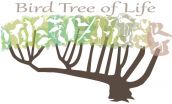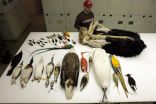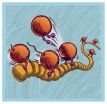The UC Santa Cruz team used the crocodilian genomes, combined with newly published bird genomes, to reconstruct a partial genome of the common ancestor of crocodiles, birds, and dinosaurs. The study, part of an ambitious international collaboration to analyze the genomes of modern birds and gain insights into their evolution, is one of eight papers from the Avian Phylogenomics Consortium being published in a December 12 special issue of Science.
Richard E. (Ed) Green, lead author of the crocodilian genome paper and an assistant professor of biomolecular engineering at UC Santa Cruz, said the slow evolutionary rate in the crocodilian lineage was helpful in reconstructing the genome of the common ancestor.
"The ticking of the molecular clock in the crocodilians is much slower than in other lineages we're used to looking at, like mammals, which means we can see back into their past more cleanly," Green said.
The reconstructed genome of the common ancestor will be a valuable tool for investigating the evolution of the "archosaurs," the group that includes all dinosaurs, pterosaurs, birds, and crocodilians. (Crocodilians are actually more closely related to birds and dinosaurs than they are to other reptiles, i.e., lizards, snakes, and turtles.) Green said the genome reconstruction effort, led by UC Santa Cruz research specialist Benedict Paten, yielded about half of the genome sequence of the common ancestor with an accuracy of about 91 percent, and he expects that to improve as more data on bird and crocodile genomes become available.
The team sequenced the genomes of three crocodilian species: the American alligator, the saltwater crocodile, and the Indian gharial. Their analysis indicates that the ancestor of all archosaurs probably had an extremely slow rate of molecular evolution, and that the rate of change sped up in the bird lineage. The rate of molecular evolution of crocodilians is an order of magnitude slower than that of mammals. The most likely reason for this relates to the relatively long time between generations in crocodilians, Green said.
"When it takes longer to get from one generation to the next, you expect the evolutionary rate to be slower, and big animals tend to have long generation times," he said. "We know from fossils that the body plan of crocs has remained largely unchanged for millions of years. Mammals, however, if you go back 50 or 60 million years there were no big mammals, so we see a faster rate of evolutionary change."
The slow rate of genome evolution in crocodilians also enabled the researchers to probe population sizes further into the past than is possible for faster evolving lineages, he said. They found that crocodile and gharial populations experienced sharp declines during the most recent ice age. Alligators, which inhabit more temperate latitudes than other crocodilians, showed a continuous decline in population throughout the Pleistocene epoch.
"Big-bodied, cold-blooded reptiles would have found the Earth a more hospitable place during warm periods like the Pliocene, and the cooling trend of the Pleistocene must have been bad news for crocodilians," Green said.
The new genome sequences are powerful tools for research on the fundamental biology of crocodiles and alligators, he said. Green is particularly interested in understanding the molecular basis of temperature-dependent sex determination in alligators (temperature rather than genetics determines whether a developing alligator becomes male or female). "There are a lot of questions about the evolutionary and molecular biology of crocodilians that we can now start to answer using genomics," he said.
The crocodilian genomes were also useful for the avian phylogenetic analyses, serving as a closely related "out group" for comparison with the bird genomes. Green and several other UC Santa Cruz researchers are coauthors of two articles on avian genomics that accompany the crocodile genomics paper in Science.
After the mass extinction that wiped out the dinosaurs 66 million years ago, the birds that survived experienced a rapid burst of evolution. As a result of this rapid diversification, the family tree of modern birds has confused biologists for centuries. The new genomics studies are helping to sort out those relationships and reveal the molecular details of how birds arrived at their spectacular biodiversity of more than 10,000 living species.
Coauthor David Haussler, professor of biomolecular engineering and director of the Genomics Institute at UC Santa Cruz, said the Avian Phylogenomics Project represents a significant step toward the vision of the Genome 10K Project (G10K) that he cofounded in 2009 with the goal of sequencing and analyzing the genomes of 10,000 vertebrate species. The G10K consortium helped organize the large international, interdisciplinary collaboration involved in carrying out this massive project.
Haussler and the other G10K leaders--Stephen O'Brien of St. Petersburg State University (Russia) and Oliver Ryder of the San Diego Zoo Institute for Conservation Research--published a commentary on the Avian Phylogenomics Project in the journal GigaScience, noting that the project has yielded "the most extensive comparative genomics analysis produced for any vertebrate group so far." In addition to the eight papers in Science, the project's initial findings are being reported in 15 other papers in Genome Biology, GigaScience, and other journals.
"G10K's contributions include a lot of work convincing people to work together, setting up collaborations, and holding meetings to get people to share ideas and get to know each other. In the end, of course, credit for this most recent work goes to the scientists most closely involved in the actual sequencing and analysis," Haussler said.
INFORMATION:
The Avian Phylogenomics Consortium is led by Guojie Zhang of the National Genebank at BGI in China and the University of Copenhagen, Erich D. Jarvis of Duke University and the Howard Hughes Medical Institute, and M. Thomas P. Gilbert of the Natural History Museum of Denmark. Contributors to the crocodilian genomics paper include 54 scientists at dozens of institutions. The crocodilian research was supported by the National Science Foundation, and Green has funding from a Searle Scholarship and a Sloan Fellowship.




